This journal is brought to you by:
- Amy Bogdal and her 4th and 5th grade CLUE students at Shelby Oaks Elementary
- Mrs. Gillespie and her 5th grade Sparks students at St. Ann Catholic School

Thank you Shelby Oaks Elementary and St. Ann Catholic School!
A Closer Look at … a Weddell Seal’s Fur & Molting
Look at how beautiful this seal’s fur is!
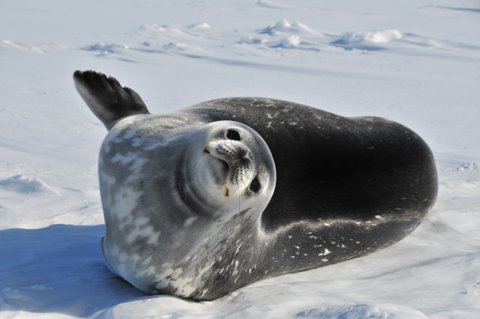
It’s a gorgeous shade of silvery gray with some lighter spots on the underside – giving her a mottled, or spotted, look. The fur is short – only about 1 inch long, straight and more dense than the hair on our heads. It covers his entire body and acts as a protective layer for the skin. The fur of adult Weddell seals consists entirely of short, shiny, guard hairs – that is, there is no soft downy underfur. This is because they don’t rely on their fur for insulation – they have blubber for that!
But, it doesn’t always look so shiny and new. Check out this seal’s coat – it’s brittle, brown and dry! Pretty unattractive, huh! They’re both from the same type of seal – so why the big coloration change?
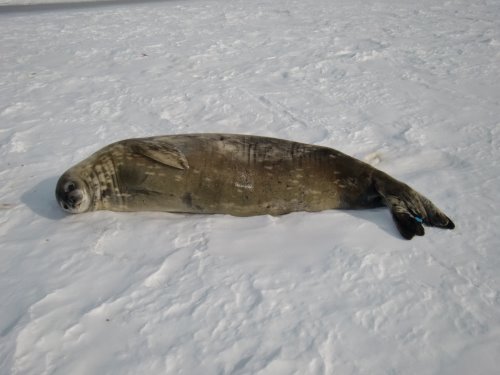
Molting Is the Key
Weddell seals molt annually (shed their fur, once a year). The old, brownish fur is shed and the new, shiny fur grows in its place. This doesn’t happen all at once, so as we walk around the ice shelf, we are looking for newly molted seals. And we are seeing rough, ocean weathered, scraggily fur all over the place.
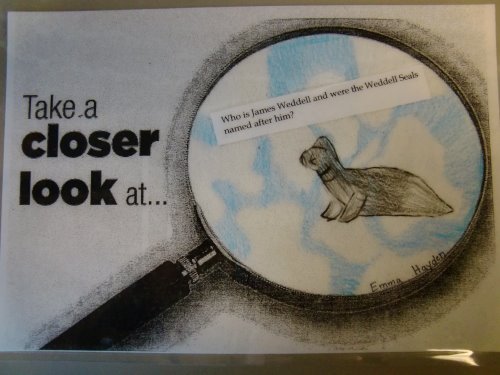
Molting on the Ice
Weddells molt during the Antarctic summer – between January and February– when they’re hauled out on the ice – relaxing and soaking up the sun! The warmth of the sun actually helps the molting process. Growing new hair happens faster if the skin is warm. That’s one reason why seals don’t spend as much time in the water this time of year – because their skin gets too cold!
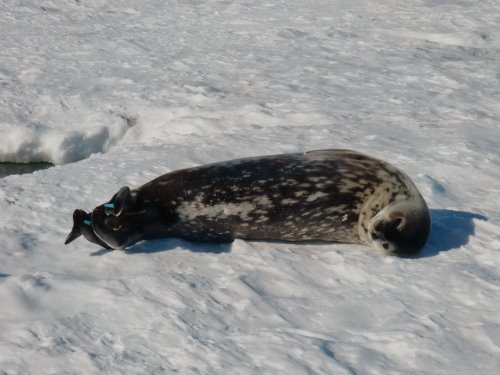
An Expensive New Coat
Growing an entirely new fur coat is expensive – not in dollars but in energy! A seal’s fur is made of protein, like our hair, and making protein uses a lot of the energy the seals have stored up for the season. Nursing a pup is also expensive – it takes a lot of energy to produce the milk for the nursing pup. So, the female seals do these ‘expensive’ tasks separately. After all – you shouldn’t spend all of your money at once, right? First comes nursing, then molting.
Which brings us to the end of the summer season – around the end of January, which coincidentally, just happens to be the same time our research team scheduled our project. Any guesses why?
The expensive tags we are using (I mean money this time) need to be secured to ‘new fur’ because if the seal has not molted, the equipment would not stay on the seal throughout the long winter months. The tag would fall off with their old fur!
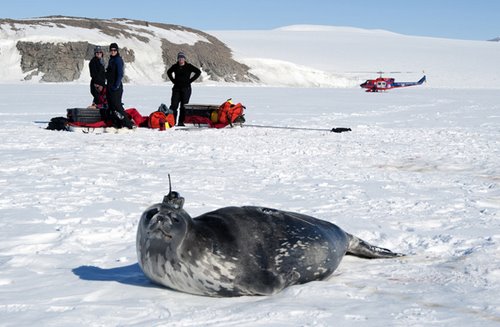
My Job
One of my jobs on this project is to collect fur samples. And you’ll never believe why! We are collecting the fur to find out what the seals are eating. Confused? I was too, at first, but it’s not quite as complicated as it seems. Each part of our body is made of the stuff we put into our body, our food! You know the saying, “You are what you eat!” - well that’s actually true. Our team will analyze the fur and try to identify chemical compounds, called isotopes, in the fur. It’s kind of like a chemical fingerprint. Each animal species has its own unique chemical fingerprint. These ‘fingerprints’ are analyzed and matched to know specific animals. Our team is now able to tell what the seals are eating. Cool, huh?
And, what’s even cooler is that the scientists know that fur only grows for a few weeks each year, so the information they get from the fur seals are molting now will tell us what kind of food the seals were eating during the short period when their fur grew in last year. If we compare that to previous years we see how the seals’ diet has changed over time. Amazing!

Pup Fur
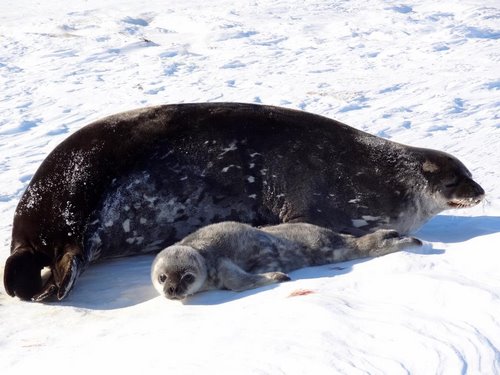
Isn’t this the sweetest picture you’ve ever seen? Look closely at the differences between the two coats of fur. What do you see?
I noticed several differences: color, length and texture (well apparent texture anyway - it's a bit difficult to tell that from a photo). Let’s take a closer look.
A Weddell pup is born with a really soft, fuzzy, fluffy brown or grey coat. That coat is called the lanugo, and it insulates the pup by trapping air around the fuzzy fur – it sort of acts as a down blanket to keep the seal warm. During the first few weeks of life, pups do not have much blubber, so the lanugo is its primary source of insulation. As the pups grow, they build their blubber layer, which then becomes their primary source of insulation. When this happens, they shed their long, soft, fuzzy, brown fur for their new, short, stylish, sleek silvery gray coat; basically, they lose the underfur and grow guard hairs. Long and fuzzy becomes short and straight.
The activity/animal depicted was conducted pursuant to NMFS Permit No 87-1851.


Comments